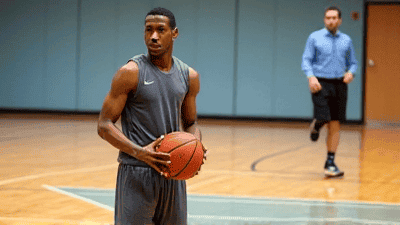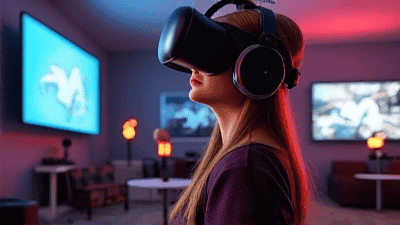
The free throw is a fundamental aspect of basketball, often seen as a routine way to score points. Yet, when a player steps up to the free-throw line during a tense game moment, the simple act of shooting can transform into a complex psychological challenge. Understanding the mindset of a player about to take a free throw reveals fascinating insights into concentration, pressure, and the interplay between technique and mental fortitude.
The Importance of Free Throws in Basketball
Understanding the Free Throw
A free throw is awarded to a player following a shooting foul committed by the opposing team. The player takes an unopposed shot from the free-throw line, providing an opportunity to score points without interference. Despite their seemingly straightforward nature, free throws can significantly influence the game's outcome. Successful free throw shooting can secure victory, particularly in close games where every point counts.
Historical Context
Throughout basketball history, exceptional free throw shooters have made their mark, often becoming legends in the sport. Players like Rick Barry and Stephen Curry are celebrated not only for their overall scoring prowess but also for their impeccable free throw percentages. These historical lenses remind us that while free throws may seem routine, they are also critical moments that can define careers and championships.
The Cognitive Processes Behind a Free Throw

Focus and Concentration
The Role of Attention
As a player approaches the free-throw line, a complex interplay of cognitive processes begins. Focus and concentration are paramount in executing a successful free throw. Players must block out distractions from the crowd, their opponents, and even their internal thoughts. The ability to grasp attention and direct it toward the task at hand is essential for free throw success.
Mindfulness Techniques
Many elite athletes employ mindfulness techniques to enhance their focus during high-pressure moments. Mindfulness involves paying attention to the present moment without judgment. Breathing exercises and visualization techniques can help players center themselves and maintain focus as they prepare for the shot. By grounding themselves in the present, players can minimize distractions and enhance their overall performance.
Visualization and Mental Imagery
Visualization is a potent tool often used by athletes to enhance performance. The concept involves mentally picturing a successful free throw before executing it. This process helps create a mental blueprint of the shot, aligning the player’s mind and body for optimal execution.
Research on Visualization
Numerous studies highlight the efficacy of visualization in sports psychology. Research shows that mentally rehearsing movements can produce similar neurological responses as physically performing them. This mental practice can boost confidence, improve muscle memory, and ultimately lead to enhanced performance during actual free throws.
Decision-Making Processes
When standing at the free-throw line, a player must make quick decisions regarding their approach. This includes considering their shooting form, stance, and rhythm. The psychological aspects of decision-making during free throws involve assessing the situation, such as the score, time left in the game, and the player's current state of mind.
The Pressure of the Moment
The pressure of the moment can greatly influence decision-making. Players may weigh their hunger for success against their fear of failure. This internal conflict can lead to the phenomenon known as "paralysis by analysis," where overthinking interferes with performance. Successful free throw shooters often manage to quiet these thoughts, relying on instinct and practice rather than overanalyzing the situation.
The Emotional Factors at Play
Pressure and Anxiety
The Nature of Pressure Situations
Free throws can carry immense pressure, especially at critical junctures in a game. As players step onto the line, they often feel the weight of expectations—whether from fans, coaches, or themselves. This pressure can elicit feelings of anxiety that may hinder performance if not effectively managed.
Anxiety Management Techniques
Athletes employ various techniques to manage anxiety while shooting free throws. Deep breathing exercises can help calm nerves, while positive self-talk encourages confidence. Visualizing successful outcomes reinforces a player’s belief in their ability to perform under pressure.
Performance Anxiety
Performance anxiety is a significant concern for many athletes. The fear of failing in front of crowds can be daunting, and this anxiety can bubble to the surface during free throw situations. This anxiety might manifest as physical symptoms, such as sweating, increased heart rate, or shakiness. Players who successfully navigate these emotions often find ways to channel their anxiety into energy rather than allowing it to become debilitating.
The Role of Experience
Experience plays a crucial role in how players deal with performance anxiety. Veteran players often have a wealth of experience in handling high-pressure situations, which can contribute to their calmness at the free-throw line. Conversely, younger players or those who have experienced failures in similar moments may struggle with the mental burden of expectations.
The Technique of the Perfect Free Throw

Developing a Consistent Shooting Form
While mental aspects are crucial, technical skill also plays a significant role in successful free throws. Players must develop a consistent shooting form that they can replicate under pressure. This process involves mastering the biomechanics of the shot, including grip, stance, and follow-through.
Building Muscle Memory
Repetitive practice helps build muscle memory, allowing players to execute their shots with precision. Free throw shooting drills can help engrain the mechanics of a shot so deeply that execution becomes almost instinctive. Relying on muscle memory alleviates the need for conscious thought during the shot, enabling players to focus on execution.
Analyzing Shooting Mechanics
During a free throw, several mechanical elements come into play, each contributing to the shot’s success. These include:
- Stance: The player's position before the shot affects balance and control.
- Grip: The way a player holds the ball is critical for achieving consistent spin and trajectory.
- Arc: The ideal trajectory of a free throw involves a careful balance of power and finesse to ensure the ball reaches the hoop in an optimal arc.
- Follow-Through: A strong follow-through reinforces shooting accuracy and can impact the ball's trajectory.
The Importance of Routine
Many elite players develop a pre-shot routine to help achieve consistency before taking free throws. This routine might involve specific movements, deep breaths, and visualizations that help center the player. A well-structured routine creates a sense of familiarity, enabling players to enter a confident mental state.
Social and Environmental Influences
The Role of Coaches and Teammates
Support systems, like coaches and teammates, can significantly influence a player’s mindset during free throw situations. Positive reinforcement and encouragement from coaches help instill confidence, while teammates can create a supportive atmosphere that eases anxiety.
The Impact of Pressure from Teammates
Conversely, the pressure of needing to perform for teammates can be a double-edged sword. While some players thrive on the desire to contribute to their team’s success, others may feel additional stress. Understanding individual emotional responses and adjusting team dynamics accordingly can help in creating an environment conducive to success.
The Crowd Factor
The role of the crowd in affecting a player’s performance cannot be underestimated. A supportive crowd can enhance confidence, while a hostile crowd can induce anxiety. Noise levels and audience reactions play a significant role in altering the atmosphere during free throws.
Crowd Psychology
Crowd psychology suggests that the energy of the audience can affect player performance. Familiarity with the crowd's reaction helps players gauge how external factors might influence their performance. Some athletes embrace the energy and thrive on crowd interaction, while others may feel overwhelmed by the attention.
Case Studies: Famous Free Throw Scenarios

The Clutch Shooter
One notable example of an exceptional free throw shooter is Stephen Curry. Renowned for his proficiency at the free-throw line, Curry exhibits remarkable confidence and skill in high-pressure situations. Understanding his mindset and techniques offers valuable lessons in mastering the psychology of the free throw.
The Choke Artist
On the flip side, the case of Shaquille O’Neal serves as an instructive illustration of how talented players can struggle with free throws under pressure. Shaquille, despite his dominance on the court, faced significant challenges at the free-throw line, particularly during high-stakes games. Analyzing his experiences provides insights into the psychological factors that can hinder even the most skilled athletes.
The Unexpected Hero
The story of Rick Barry, one of the best free throw shooters in NBA history, offers a compelling case study. Barry’s unique shooting style and mental preparation highlight how a player's approach to the free throw can redefine expectations. His consistency and success reveal the importance of psychological preparedness and individualized techniques in mastering free throw shooting.
Strategies for Improving Free Throw Performance
Developing Mental Fortitude
To enhance free-throw performance, players must dedicate time to building mental fortitude. This includes developing coping strategies for managing pressure and anxiety. Techniques such as visualization, positive self-talk, and mindfulness can be seamlessly integrated into regular practice routines.
Structured Practice Regimens
Incorporating specific drills into practice regimens can significantly improve free throw shooting. These drills should emphasize repetition, technique, and mental focus. Players can simulate high-pressure scenarios to prepare themselves for actual game situations.
Utilizing Video Analysis
Analyzing shooting mechanics through video can be invaluable. Players can review their shooting form, identify areas for improvement, and gain insights into their performance. This process fosters a deeper understanding of both cognitive and mechanical aspects of the free throw.
The Neuroscience of Free Throw Shooting
Brain Function and Performance
Understanding the neuroscience behind free throw shooting reveals how the brain contributes to athletic performance. Various regions of the brain, including the prefrontal cortex, basal ganglia, and cerebellum, play interconnected roles in executing and regulating motor skills.
The Role of the Prefrontal Cortex
The prefrontal cortex is essential for decision-making and impulse control. During a free throw, it processes the cognitive and emotional aspects of the shot. Overactive or anxious thoughts can impede free throw performance, highlighting the importance of managing mental states.
The Impact of Stress on Neural Pathways
Stress can alter neural pathways in the brain, inhibiting the ability to focus and execute skills. Research indicates that high-pressure situations can lead to heightened activity in the amygdala, which governs emotional responses, while reducing function in the prefrontal cortex. This shift can lead to detrimental impacts on both cognitive processing and motor control.
Future Directions in Free Throw Psychology
Integrating Sports Science into Practice
As the field of sports psychology evolves, integrating sports science into training regimens will become increasingly vital. Players and coaches can leverage advancements in understanding human behavior to refine techniques and mental strategies.
Embracing Technology
Emerging technologies, such as virtual reality training and biofeedback systems, can offer innovative approaches to free throw improvement. By simulating realistic game pressure, athletes can enhance their mental preparation and become desensitized to anxiety.
Conclusion
The psychology of a perfect free throw is a fascinating interplay of cognitive processes, emotional factors, and technical skills. As athletes step up to the free-throw line, they navigate a complex landscape of focus, pressure, and decision-making. By understanding the psychological components of free throw shooting, players can develop strategies to enhance their performance in high-pressure situations.
Whether through mental preparation, refining shooting techniques, or leveraging support systems, the journey toward mastering the perfect free throw involves a holistic approach that embraces both physical and mental dimensions. As research in sports psychology continues to evolve, players and coaches can better equip themselves to face the challenges of competitive basketball.
In the end, the free throw illustrates how the mind and body must work in sync to achieve success. For players, the key to a perfect free throw lies not only in technique but also in the mastery of their mental game, empowering them to thrive under the most intense pressure.








